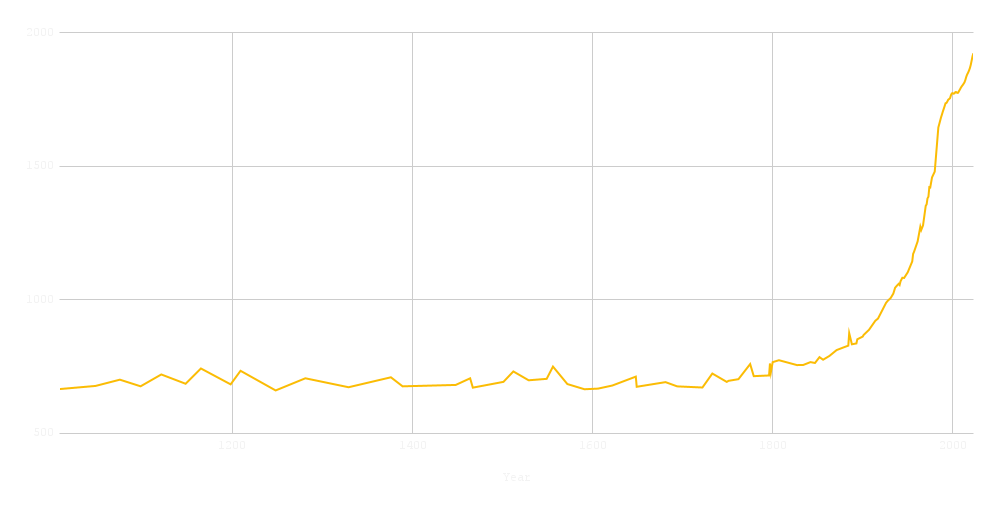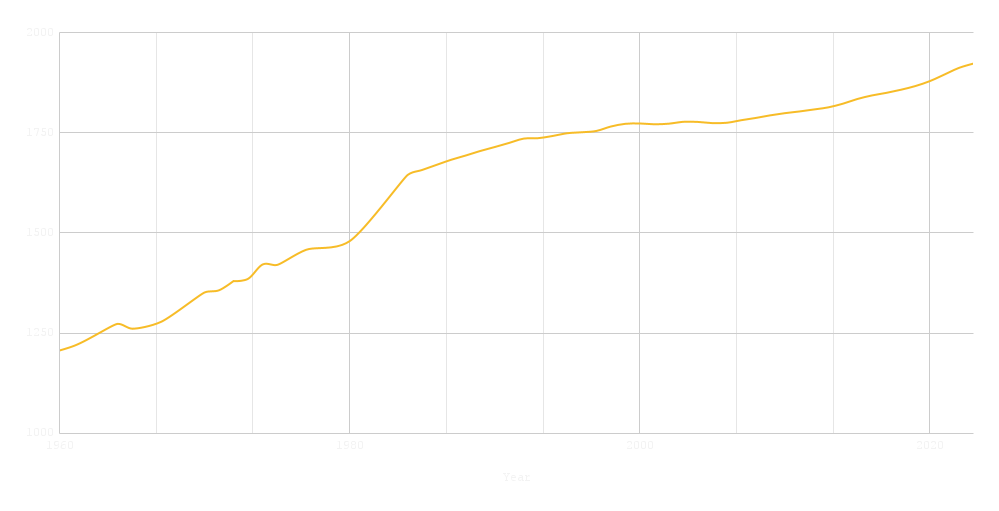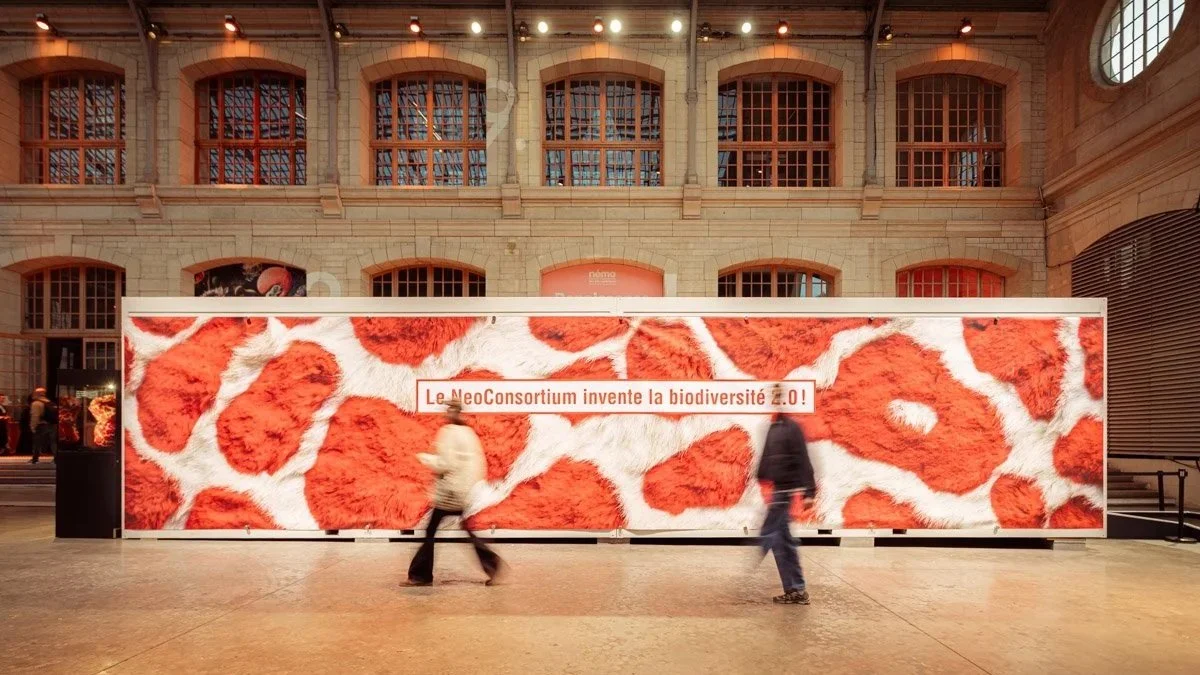Smoke and MirrorS by Beatie wolfe
Methane Data x Big Oil Ads since the first Earth Day
A new project from Beatie Wolfe ‘Smoke and Mirrors’ uses art to communicate 6 decades of climate data, specifically rising methane levels (Smoke), set alongside the verbatim advertising slogans deployed by the Big Oil industry to deny, doubt, and delay (Mirrors) climate awareness through the decades, starting from 1970 until present day.
1970: "Out to clean the air" at 1351.7 ppb ch4 🌎
1984: "Lies they tell our children" at 1644.9 ppb ch4 🌍
1991: "Doomsday is cancelled" at 1724.8 ppb ch4 🌏
1993: "Apocalypse no" at 1736.5 ppb ch4 🌎
2000: "Unsettled Science" at 1773.22 ppb ch4 🌍
2004: "Your carbon footprint" at 1777.05 ppb ch4 🌏
2012: "License to operate" at 1808.1 ppb ch4 🌎
2017: "Oil pumps life" at 1849.58 ppb ch4 🌍
2023: "Net-Zero" at 1911.8 ppb ch4 ⛽
1970: "Out to clean the air" at 1351.7 ppb ch4 🌎 1984: "Lies they tell our children" at 1644.9 ppb ch4 🌍 1991: "Doomsday is cancelled" at 1724.8 ppb ch4 🌏 1993: "Apocalypse no" at 1736.5 ppb ch4 🌎 2000: "Unsettled Science" at 1773.22 ppb ch4 🌍 2004: "Your carbon footprint" at 1777.05 ppb ch4 🌏 2012: "License to operate" at 1808.1 ppb ch4 🌎 2017: "Oil pumps life" at 1849.58 ppb ch4 🌍 2023: "Net-Zero" at 1911.8 ppb ch4 ⛽
This evocative visualization, based on NASA’s Blue Marble photograph and produced in collaboration with Parliament will be set to “Oh My Heart”, which was released as the world’s first bioplastic record by Beatie Wolfe, Michael Stipe and Brian Eno’s EarthPercent.
Smoke and Mirrors follows Wolfe’s multi-award winning ‘From Green to Red’ which was unveiled at Nobel Prize Summit and projected as the largest art piece at COP26
Smoke and Mirrors was influenced by the work of Geoffrey Supran & Naomi Oreskes and sources data from NOAA, NASA, EEA
Highlights So Far
Prix Ars Electronica - Winner
The world's most time-honored media arts award, Prix Ars Electronica announces that its "Golden Nica 2024" will be awarded to Beatie Wolfe’s ‘Smoke and Mirrors’ with the ceremony being held in Linz on September 4th 2024 - announcement (+) / festival review (+)
SXSW Art Installation
Invited as the only official art piece of SXSW’24 ‘Smoke and Mirrors’ was first unveiled and installed as an official art piece throughout the festival following a featured session with the SXSW’s Co-President - listing (+)
Biennale Internationale des Arts
Paris’ Némo Biennale invited Beatie Wolfe's "Smoke and Mirrors" to be part of its new exhibition titled "New Utopias in the Digital Age" which runs 2025.10.11 > 2026.01.11
Ars Electronica Center
As part of the museum “Connected Earth” exhibition which runs throughout 2025 and 2026 Smoke and Mirrors is presented within the main exhibition hall
Lentos Kunstmuseum Linz
Considered to be one of the most important museums of modern and contemporary art in Austria, “Smoke and Mirrors” was exhibited to some 112,000 visitors from over 60 countries.
Alongside the data art piece, Beatie Wolfe and Michael Stipe’s bioplastic EarthPercent record was exhibited as both the soundtrack to the visualisation and a tangible environmental solution to the production of vinyl
SXSW Featured Session
Hugh Forrest, SXSW’s Co-President & Chief Programming Officer, interviews Beatie Wolfe about how her work unites Art and Science - SXSW listing (+)
TOA (Tech Open Air)
Berlin’s leading technology event, TOA, celebrates its 10th anniversary in the iconic Colosseum in Berlin with the European Premiere of ‘Smoke and Mirrors’ - listing (+)
BFI (British Film Institute)
In Austin for the official XR launch, Ulrich Schrauth (BFI) interviews Beatie Wolfe about ‘Smoke and Mirrors’ and her world first designs
Systemic Change Through Climate Literacy
Wolfe also spoke alongside ClientEarth for an environmental literacy panel titled "Systemic Change Through Climate Literacy" - more (+)
Data and Science Visualization
Data science visualizations took center stage at the animation festival with Wolfe joining work from NASA & NCSA Advanced Visualization Lab - more (+)
Smoke
Methane (CH4) data from NOAA/NASA/EEA



Methane CH4
ˈmiː.θeɪn
is a colorless, odorless and highly flammable gas. It is composed of carbon and hydrogen. It is also a potent greenhouse gas, meaning it affects climate change by contributing to increased warming (US Environmental Protection Agency)
-
UN environment program: What you need to know about methane
🌎 Methane (CH4), the primary component of natural gas, is responsible for approximately a third of the warming we are experiencing today. (IPCC)
🌍 Methane is a powerful and short-lived greenhouse gas, with a lifetime of about a decade and Global Warming Potential about 80 times greater than that of carbon dioxide (CO2) during the 20 years after it is released into the atmosphere. (IPCC)
🌏 Without action global anthropogenic methane emissions are projected to rise by up to 13% between 2020 and 2030. Global methane emissions must be reduced by 30-60% below 2020 levels by 2030 to be consistent with least-cost pathways of limiting global warming to 1.5°C this century (CCAC). · Methane also harms human and ecosystem health. Methane emissions lead to ground-level ozone pollution which causes approximately a million premature deaths per year globally and reduces crop productivity and harms ecosystems.. (UNEP&WMO)
🌎 Decarbonizing our economies and transitioning out of fossil fuels to achieve net zero by 2050 must go hand in hand with full implementation of targeted methane abatement by 2030 to keep our 1.5 °C target within reach. All least cost pathways consistent with 1.5 °C require full implementation of methane targeted measures by 2030 to cut emissions by 30-60% below 2020 levels by 2030.
🌍 Proven technologies and practices could reduce emissions from the major sectors, i.e. fossil fuel, waste and agriculture, by approximately 180 million tonnes a year, or as much as 45% by 2030. Most of these technical solutions can be implemented at negative or low cost, especially in the fossil fuel and waste sectors.
🌏 Methane is increasingly a global climate priority, with ambition for addressing emissions building among both governments and companies. (UNEP)
🌎 The majority of human-driven methane emissions come from three main sectors: approximately 40% from agriculture, 35% from fossil fuels an another 20% from solid waste and wastewater (CCAC)
🌍 The fossil fuel sector has the greatest share of ready-to-implement and cost effective technical opportunities to reduce methane emissions in this decade. Investments needed in operational changes in the oil and gas sector are equivalent to less than 2% of income generated by oil and gas companies in 2022.
Source: UN environment program
-
UN environment program: Why Is Methane Mitigation in the Fossil Fuel Sector Critical For Reaching 1.5 Target?
⛽ The fossil fuel sector accounts for about 35% of anthropogenic methane emissions. To be consistent with IPCC 1.5 °C scenarios, methane emissions from the sector should be reduced by approximately 60% below 2020 levels by 2030 and nearly 80% by 2050. (UNEP/CCAC)
⛽ The fossil fuel sector has the greatest share of ready-to-implement and cost-effective technical opportunities to reduce methane emissions. (IEA/UNEP/CCAC)
⛽ Tried and tested approaches exist. 80% of oil and gas methane abatement measures and up to 98% of coal measures could be implemented at a negative or low cost. Total spending required to deploy all available methane mitigation strategies in the oil and gas sector through 2030 is less than 2% of the net income earned by this industry in 2022 (IEA/UNEP/CCAC).
⛽ Immediate, targeted methane abatement in the fossil fuel sector can prevent nearly 1 million premature deaths due to ozone exposure, 90 million tonnes of crop losses due to ozone and climate changes, and about 85 billion hours of lost labour due to heat exposure by 2050, providing roughly USD 260 billion in direct economic benefits. (IEA/UNEP/CCAC).
⛽ Methane mitigation is an economic and environmental win-win. As natural gas is composed mostly of methane, emissions of methane from the oil and gas value chain represent a wasted product that translates into roughly $34 billion of lost revenue per year, at average 2017 delivered prices. (UNEP)
⛽ Without a dual strategy of reducing methane and deep decarbonisation we will not be able to meet the Paris Agreement objective. Reduction in oil and gas demand will lead to a reduction in methane emissions—but will not reduce methane fast enough to limit warming to 1.5 °C without additional, immediate actions to abate methane emissions from fossil fuel production. We cannot wait to deploy this essential climate and health solution.
⛽ Appropriate regulatory frameworks are needed, as well as credible data, and a dramatic ramp-up in investment to mitigate methane emissions from fossil fuel production.
⛽ Measures can and should be financed by the industry itself, but a number of low- and middle-income countries may face barriers to accessing capital for some interventions, which may not be implemented without external support.
Source: UN environment program
-
1909 - Oil production in the United States surpassed that of the rest of the world combined.
1911 - US Supreme Court ordered the Standard Oil Trust to break apart. The monopoly would become thirty-four separate companies.
1989 - Exxon Valdez oil spill
1990 - Gulf War
1997 - Hydraulic fracturing (fracking) proliferates after the Mitchell Energy Company perfects the technique making it economically feasible.
The 2000s - Oil prices spike. With prices for oil generally staying below $25 a barrel, prices hit $30 in 2003. The price of oil continues to climb above $65 in 2005 and eventually hits a high of $147.30 in 2008.
2008 - Global Financial Crisis - Just as oil prices are topping out at $147 a barrel, the global financial crisis sends economic demand into rapid decline.
2010 - BP Horizon oil spill
2015 - Oil Glut. The effectiveness and explosion of oil production in the US due to advancements in hydraulic fracturing leads to a global glut in oil supplies. The US lifts oil export ban that has been in place to strategically protect domestic oil reserves.
Source: EKT Interactive
Mirrors
Adverts from Big Oil
Highlights
Longer list by decade
-
1960s
- Feb 4, 2024 1962: Enough energy (Humble Oil)
-
1970s
- Feb 4, 2024 1970: Out to clean the air (Amoco)
- Feb 4, 2024 1970: Progress or the environment? (Marathon Oil)
-
1980s
- Feb 4, 2024 1985: Land will be replanted (Chevron)
- Feb 4, 2024 1984: Lies they tell our children (Mobil)
-
1990s
- Feb 4, 2024 1997: Science what we don't know (Mobil)
- Feb 4, 2024 1993: Apocalypse no (Mobil)
- Feb 4, 2024 1991: Doomsday is cancelled (ICE)
- Feb 4, 2024 1991: Who told you the earth was warming? (ICE)
- Feb 4, 2024 1991: Global warming may not be true (ICE)
- Feb 4, 2024 1997: Don't risk our future (Global Climate Coalition)
-
2000s
- Feb 4, 2024 2006: Your carbon footprint (BP)
- Feb 4, 2024 2008: all of the above (BP)
- Feb 4, 2024 2000: Unsettled Science (ExxonMobil)
- Feb 4, 2024 2004: What on earth is a carbon footprint? (BP)
-
2010s
- Feb 4, 2024 2019: The future of fuel? (ExxonMobil)
- Feb 4, 2024 2017: Oil pumps life (American Petroleum Institute)
-
2020s
- Feb 14, 2024 2023: We're part of the solution! (BP)
- Feb 14, 2024 2023: Net-Zero (Shell)
- Feb 4, 2024 2021: Energy business for the future (Shell)
- Feb 4, 2024 2022: Carbon capture (Chevron)
- Feb 4, 2024 2022: Turning co2 into fuel (Occidental)
- Feb 4, 2024 2022: Blue Hydrogen (ExxonMobil)
We are currently working through a backlog of adverts but if you think we've missed one please don't hesitate to share it...Statement of Intent
I had the idea for ‘Smoke and Mirrors’ a few years ago, after my CO2 project ‘From Green to Red’ came out and I saw how effectively it helped people to see climate data differently and to absorb it via the power of art. Realising that a crucial piece of the climate puzzle (how we got to this critical point) has been the fossil fuel industry’s response to the emerging environmental awareness of the 1970s, and that methane emissions (30 times more potent than carbon for trapping heat) are increasingly linked with that industry, I wanted to illuminate this key parallel timeline.
While ‘From Green to Red’ visualised 800,000 years of rising CO2 levels, ‘Smoke and Mirrors’ focuses on fifty years of methane data set alongside the Big Oil advertising campaigns that were running during this critical period in human history. Smoke and Mirrors is about visualising not just the methane data (smoke) in a way people can really absorb but also the disinformation campaign (mirrors) which has caused the data to be denied, doubted and delayed through the decades. Smoke and Mirrors begins in 1970, which was also the year we had our first ‘Earth Day,’ so I chose to base the visualisation on the iconic and deeply embedded NASA Blue Marble photograph (taken in 1972) that allowed us to see our planet for the first time. This was a key point in our timeline for both emerging environmental awareness and the backlash against it.
Like ‘From Green to Red’ which was set to the song I wrote as a teenager after seeing An Inconvenient Truth, this visualisation is set to a similarly interlinked track, “Oh My Heart,” which was released as the world’s first bioplastic record with the music in both cases helping to activate and humanise the data.
There was extensive research involved with building out this project, which stands apart from the video and is viewable on the website, including: compiling the ice core and atmospheric methane data along with the Big Oil advertising campaigns from 1970 until present day. It was then about choosing which campaigns to highlight to help illustrate the full spectrum of “Deny, Doubt and Delay” in just 4m30s.
Prix Ars Electronica // Jury Statement
Smoke and Mirrors is a scientific visualization that confronts us with the ever increasing tension between scientific facts about global warming and ideological positions denying such science. An emissions clock at the top of the screen rapidly counts the amount of methane in parts per billion as the 3D globe image starts to emit a pinkish smoke: a data visualization of methane density since 1970. As the Earth slowly turns and fills up with smoke, a series of still-to-this-day shocking headlines unfurls across the screen: “Oil pumps Life,” “Unsettled Science,” and “Doomsday is Cancelled.” These headlines demonstrate six decades of climate denialism and misinformation in the public sphere from Big Oil corporations. Smoke and Mirrors is inspired by the path-breaking work of Harvard historians of science Naomi Oreskes and Geoffrey Supran, who have extensively examined how fossil fuel companies have long strategized to shift responsibility for global warming away from the fossil fuel industry and onto consumers while also depicting climate change as a “risk,” rather than a reality. Smoke and Mirrors impressed the jury not only through its stark message but also in its reimagining of scientific data visualization. Visualization pioneer Edward Tufte popularized the notion that data should speak for itself, minimizing the influence of the designer. Smoke and Mirrors takes a deliberate departure from this traditional approach. Instead of letting the data stand alone, it boldly incorporates historical headlines that are in direct opposition of scientific facts, inviting the viewer to question prevailing narratives about environmental responsibility and accountability. This deliberate strategy compels the audience to confront the misalignment between scientific data and advertisement-driven public perception, emphasizing the magnitude of the climate crisis in a thought-provoking manner. Rather than being just a pure data visualization, this piece is a data “visceralization”, intentionally evoking feelings of discomfort and awe. In Data Feminism, Catherine D'Ignazio and Lauren Klein highlight the importance of acknowledging subjectivity and emotion in data work, arguing that data practices should engage with complexity and challenge existing power structures. In this vein, Smoke and Mirrors exemplifies how data can be wielded not just to inform but to disrupt narratives, urging viewers to reconsider their perspectives on urgent societal issues - more (+)

Credits
The Smoke and Mirrors installation at SXSW24 was part of the Future Art and Culture programme at SXSW produced by British Underground and Arts Council England with partnership support from the British Council

















































